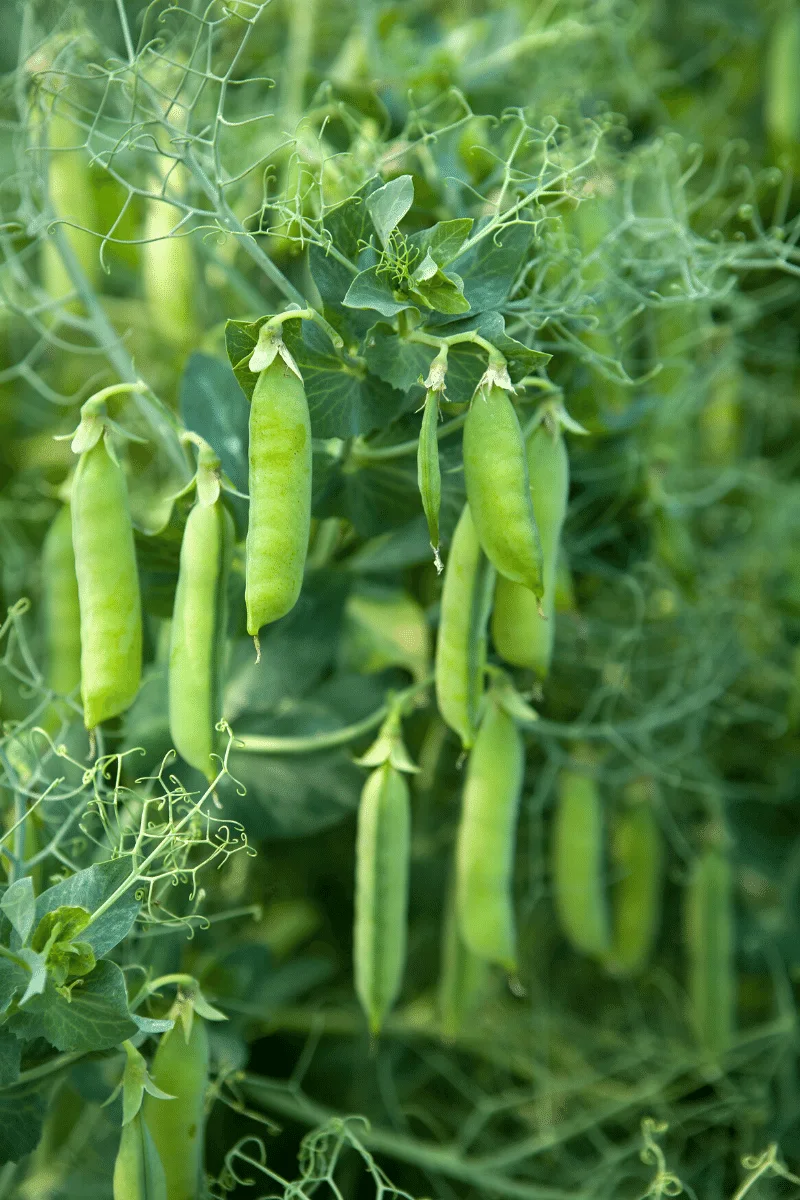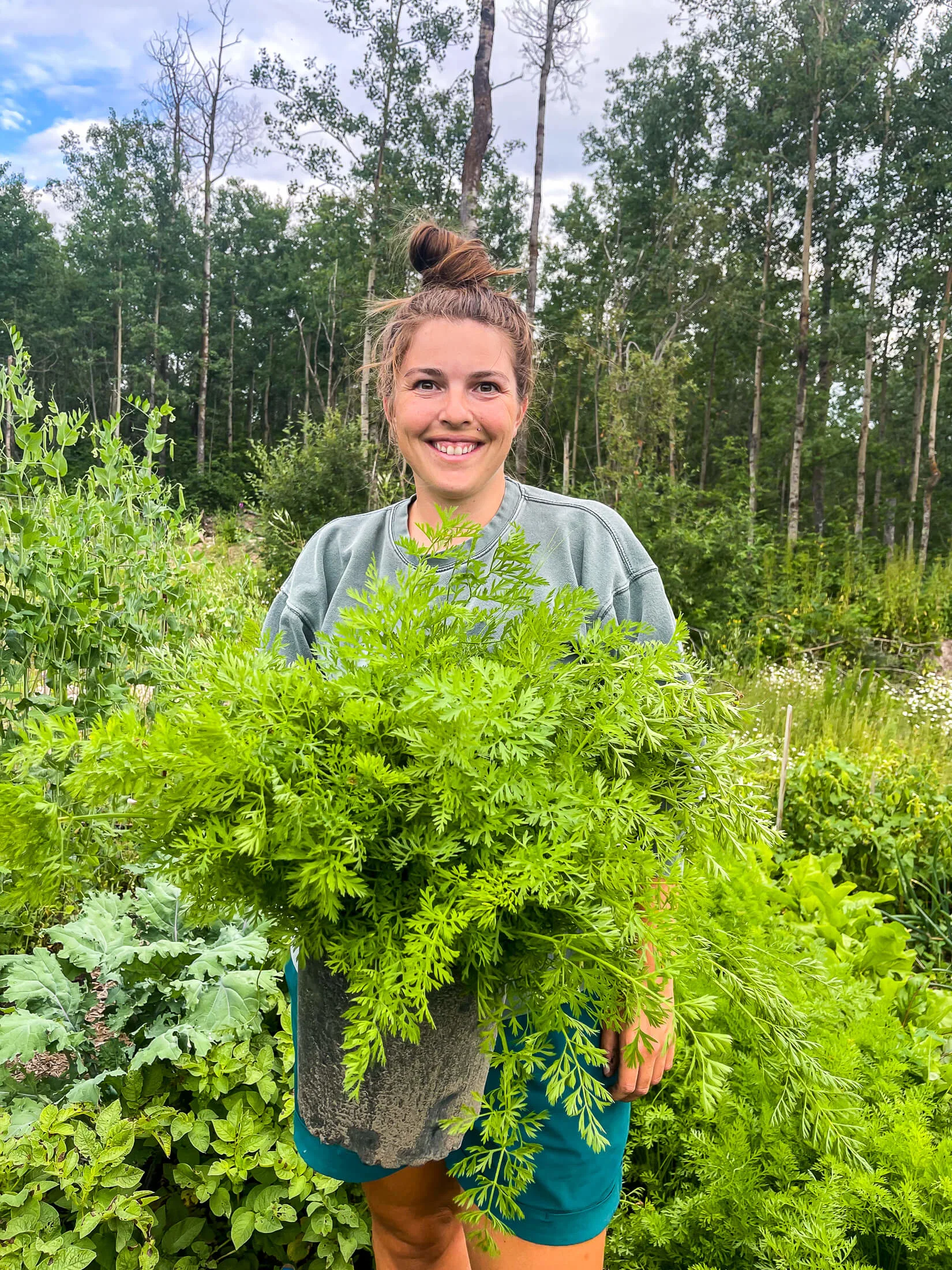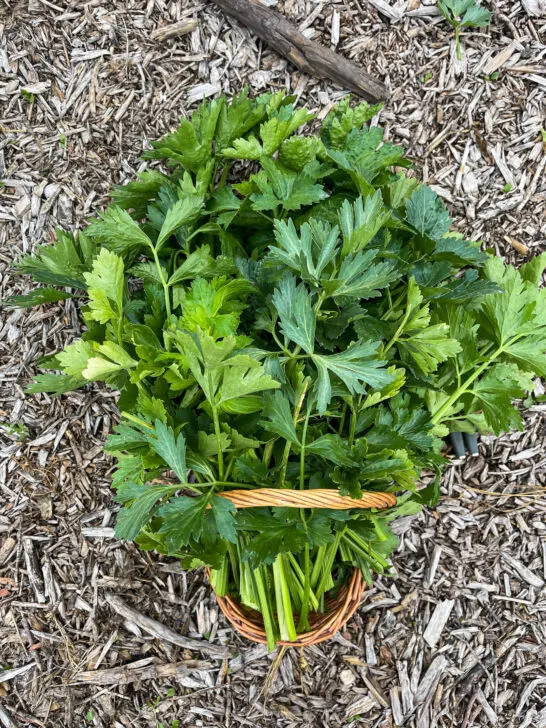Sage companion plants can help improve the yield, health, and pest resistance of your garden crop!
The sage plant (Salvia officinalis) is a member of the mint family, Lamiaceae. It is an evergreen herb in zones 5-8, but grown as an annual with ease in colder climates. Sage has grey-green leaves and purple-blue flowers that appear in late spring to early summer. It has a strong, slightly pungent scent with a savory, slightly peppery flavor. The plant can be grown in most parts of the world and is easy to care for. It prefers dry soil and well-drained locations.
This herb is commonly used in cooking, as well as for medicinal and spiritual purposes. The leaves can be used fresh or dried, and the stems can also be used to make tea. The leaves of the sage plant have a strong, earthy aroma and flavor that adds complexity to dishes like stuffing, soups, and sauces.
Burning sage is thought to create a peaceful atmosphere and drive away evil spirits. This practice, known as smudging, has been used by Native Americans for centuries. Today, many people continue to use sage for this purpose.

As an Amazon Associate I earn from qualifying purchases.
Jump to:
What Is Companion Planting?
Companion gardening is the practice of planting two or more plants together for the benefit of one or both plants. By planting sage with certain plants, you can help increase the growth and vigor of your vegetables while reducing the likelihood of pests and diseases on both the sage and the companion plant (s).
It's like a food forest, but on a smaller scale!

What Are The Benefits?
There are many reasons why companion planting is beneficial, but some of the benefits specific to sage include:
- help to protect from pests and diseases.
- improve growth and vigor, and in some cases, even flavor!
- help to attract beneficial insects, which will then prey on pests.
- improve soil health, through nitrogen fixation and nutrient cycling
- provide optimal growing conditions, such as shade or ground cover.

Best Sage Companion Plants
Beans + Peas:
Beans, peas, and other legumes are powerful companion plants, helping to improve the garden by enriching the soil. Legumes are able to capture atmospheric nitrogen and convert it into a form that can be used by other plants and depositing it into the soil, which helps to increase crop yields. This process is known as nitrogen fixation and benefits most plants!

Brassicas:
Cabbage, cauliflower, broccoli, brussels sprouts and other cole crops benefit from sage's aromatic characteristics. The strong scent of sage helps to repel cabbage moths, cabbage maggots, cabbage worms, and even black flea beetles that love to snack on your cruciferous veggies.

Carrots:
Sage is one herb that's capable of repelling carrot rust flies, which can wreak havoc on your harvest. Plant sage near your carrots and you'll be free from these pesky pests! It's also believed that sage helps to improve the flavor of your carrots.
Sage can also repel hungry foragers like deer. You don't know sadness until a deer strolls through your garden and eats ALL your carrots tops! If using sage to deter foraging animals, it doesn't need to be directly interplanted with the carrots to be effective. Use the sage as a border plant in the garden or even place it in pots amongst your rows.

Celery:
Sage planted near celery can help to mask the scent of your delicious stalks, improving the harvest! It's important to protect celery during the growing season because celery takes SO long to grow - keeping it healthy and free of pests is important when trying to maximize your harvest.

Rosemary:
Rosemary and sage are kind of a match made in evolutionary heaven! These two plants originated in the Mediterranean and enjoy similar growing requirements, so they are natural companions. Rosemary is one of the very few herbs that can handle growing harmoniously with sage!
These two herbs can be safely planted next to each other, interplanted, or in pots.

Strawberries:
Fragrant sage can help to mask the scent of your juicy, delicious strawberries and "hide" them from pests, like slugs, and hungry foragers.
If you're lucky enough to live in a zone where sage perennializes, you can create a lovely, self-sustaining strawberry bed!

Tomatoes:
Sage helps to repel hungry flea beetles from your tomato plants and attracts beneficial insects and pollinators. As growers, we often harvest sage before it reaches maturity and flowers, but for the best results, allow at least some of your sage to flower. Flowering sage is excellent at attracting pollinators like bees and butterflies to the garden.

Sage Companion Plants To Avoid
Cucumber:
Cucumber doesn't get along with many plants in the garden. The huge, sprawling plants are space and resource hogs and lesser plants can easily be crowded out by the cucumber vines. Sage is one plant that won't just get choked out - it can actually stunt the growth of your cucumbers!
If you're looking to companion plant your cucumbers with a herb, try dill instead!

Alliums:
Onions, leeks, garlic, and other members of the allium family make poor companions for sage. Although onions pan-fried with sage in some butter taste delicious, the pairing in the garden can be detrimental.
Sage is a dry-climate perennial while annual alliums have shallow roots and thirsty habits. Since sage and alliums prefer different growing conditions, it's best to plant them in separate beds or containers. Plus, harvesting onions, shallots, or garlic can damage the roots of sage if it's perennialized in your zone.

Basil:
Herbs are herbs, right?
Wrong! Herb rows and beds are beautiful, but not always practical!
Basil and sage should not be planted together, as sage prefers less water and well-draining soil while basil is a thirsty tasty. So if you're looking for an aromatic herb companion for your tomatoes or other vegetables, opt for rosemary instead!

Fennel:
Fennel catches a lot of flack, but for good reason. It is probably the grumpiest garden dweller. Fennel and sage don't just dislike each other - they really despise one another!
Fennel is allelopathic, which means it produces a chemical in the soil that other plants, including sage, find toxic. Avoid planting sage and fennel together at all costs, as sage will suffer greatly if placed near fennel!

Rue:
Rue is an ancient, somewhat bitter herb, native to the Balkan region, but can be found in some modern gardens.
While rue and sage have similar soil and water requirements, sage will suffer if planted too close to rue.

More Companion Planting Guides!
Final Thoughts
By understanding sage companion plants, you can make the most of your garden and maximize yields while keeping pests away! Plant sage with other herbs and vegetables that benefit from sage's aromatic properties or deter hungry foragers - like sage does for cucumbers! Keep sage away from allelopathic plants, like fennel, as sage will suffer if planted too close. And remember to allow some of your sage to flower - it'll attract pollinators to the garden and add beauty to your space!
Pin This Sage Companion Planting Guide





